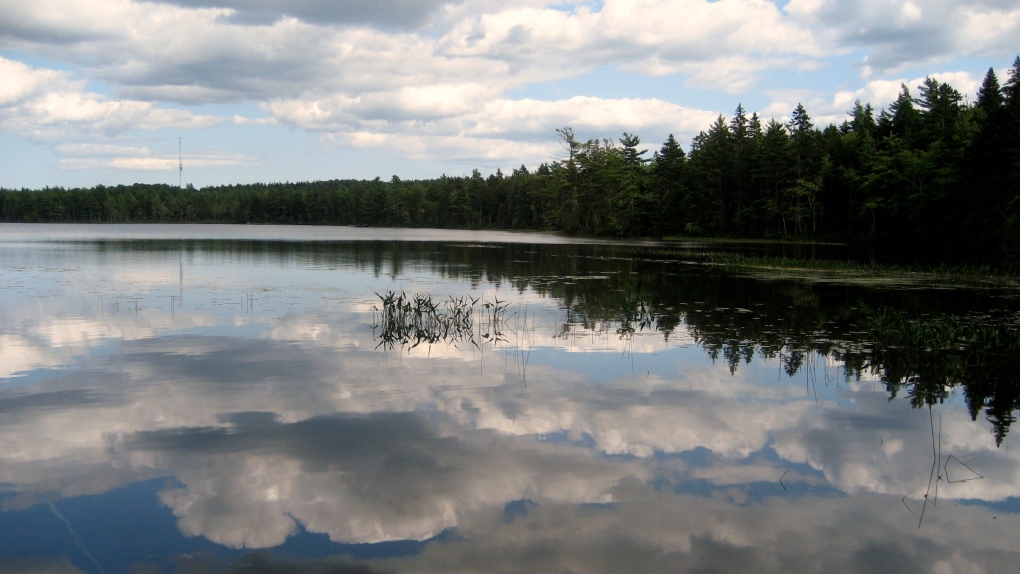
[ad_1]
When you head down to a lake in Canada this summer, you might spot more algae covering the surface than usual. This is just one of the scary impacts that our warming planet is having on lakes globally right now, according to a biology professor.
It’s part of a pattern that is only going to increase with global warming, John Smol, a professor at Queen’s University, told CTV News Channel, painting a picture of lakes shrinking, others flooding, fish species dying out and algal blooms killing off underwater plants.
“We’re sleepwalking to disaster,” he said Sunday, stating that we need to act now to slow these changes. “I wouldn’t say it’s too, too late, but it’s very, very late.”
When people initially hear that our summers are getting longer, at first “they think it’s great,” he said.
But with that extended warmth comes increasing instability in ecosystems, including the more than 100 million lakes that exist in the world.
“One of the classic things for people who might be at their cottages this weekend, or soon, they’ll start seeing probably more algal blooms, especially blue-green algal blooms – these are the scums at the surfaces of lakes,” Smol said. “They probably didn’t see those that commonly in the past.”
He explained that blue-green algal blooms, which are cyanobacterial blooms, “can have serious health effects, not just for us, but for other organisms.”
Cyanobacteria thrives in warm water and can grow more rapidly when temperatures increase, meaning climate change can help to provide the perfect conditions for increased algal bloom.
These algal blooms can block sunlight for those living under the surface of the water, as well as consume oxygen that might have otherwise fed underwater plants, leading to dead zones in our lakes. They can even make the water toxic by leaching out too much oxygen.
We’ve seen the impact of a cyanobacterial bloom before in one of the Great Lakes – the water supply in Toldeo, Ohio, was shut down for three days in 2014 by an algal bloom in Lake Erie.
But how climate change affects our lakes goes beyond algae.
“That’s just one of the things that you can visually see,” Smol said. “A lot of fish habitat is being seriously affected, especially on deep-water fish who like cold water.”
Increased algal bloom, cold-water fish losing their natural habitats, winter ice cover shrinking and declining levels of dissolved oxygen in the water are all covered in a new study that looked at how climate change affects lakes.
Smol, along with experts from York University and Bangor University in Wales, reviewed the current research on freshwater lakes from across the globe in order to create a cohesive picture.
The report, published mid-July in the peer-reviewed journal BioScience, found that climate change is transforming our lakes in numerous ways, depending on where on the planet they are situated.
In Ontario, algal blooms have been reported in lakes as late as November, the study points out.
The study also found that global evaporation of lakes is expected to increase by 16 per cent by the end of the century.
“In an area with more evaporation, water levels will go down,” Smol said. “If you’re in an area that’s getting now more runoff, say you’re getting your water from high mountain areas that are driven by glacial melt, well, right now you might be getting lots of water, even too much water.
“They’re like water towers, these glaciers in the mountains — once they melt, they kinda slow down and cut off a lot of the water supply.”
Loss of ice cover on lakes can also lead to a greater salinity in the water itself, the study found, which impacts aquatic life.
Smol said the varying impacts that climate change has on our lakes is affecting not only plants and animals in the water, but cultural, recreational and economic activities of the humans that live by that water.
“For many peoples, freshwater fish is a major source of protein, not just in Canada, but around the world, and if some of your prized fish are being squeezed out by this warming, it comes into food security as well,” he said.
These impacts are often felt more strongly by Indigenous communities, which may rely on fishing and other activities connected to the water.
“The last thing many Indigenous communities need is more problems with their water supply,” Smol said.
Our inaction on climate change is frustrating to scientists like Smol, who said that we haven’t prepared enough for how our world is changing.
“The fact that I still rage means that I still have hope,” he said. “But it’s very, very late.
“There have been a few positive things being espoused by different governments, but we have to get moving fast and getting into this direction. The longer we wait, the fewer and fewer options we have. And really, now, options for our grandchildren and great grandchildren. There’s more changes coming, and we have to get ready for those.”
[ad_2]

التعليقات